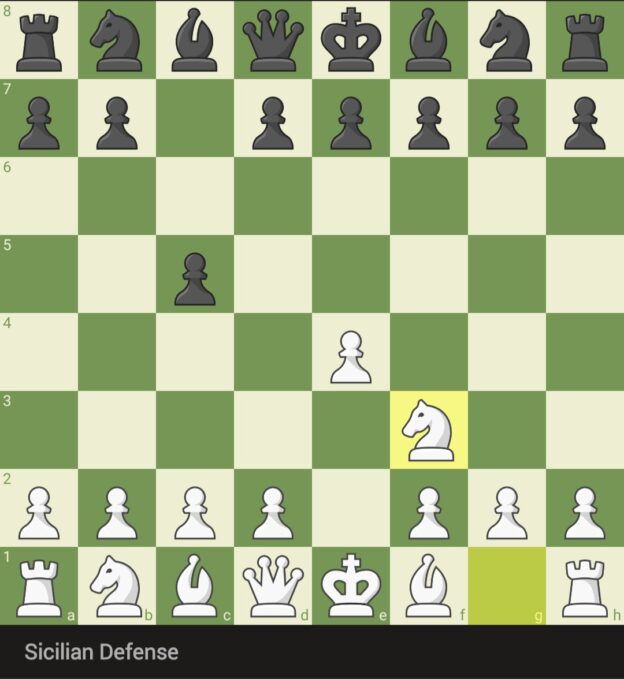In the realm of chess openings, few are as renowned and fiery as the Sicilian Defense, particularly its Open Sicilian variation. This bold and dynamic defence, employed by many of the greatest chess minds in history, is a testament to the relentless pursuit of counterplay and aggression on the board. This essay delves into the history, principles, and enduring allure of the Open Sicilian, a chess opening that has set the stage for countless epic battles on the 64 squares.
Historical Origins:
The roots of the Sicilian Defense can be traced back centuries, but it gained prominence during the 19th century. The name “Sicilian” became associated with it due to early analysis by chess theoretician Pietro Carrera, who was from Sicily. The Open Sicilian, characterized by an early d2-d4 by White and the immediate exd4 capture by Black, has been a central focus of chess theory for generations.
Key Moves and Variations:
The Open Sicilian typically unfolds with the moves 1.e4 c5 2.Nf3, followed by 2…d6 and 3.d4 cxd4. Black’s early capture of the d4 pawn creates an open and dynamic position. From this point, an array of variations emerge, each with its unique strategies. Popular variations include the Sveshnikov, Najdorf, Dragon, and Scheveningen, among others.
Principles and Characteristics:
- Imbalance and Asymmetry: The Open Sicilian thrives on asymmetrical positions and imbalances. By capturing on d4, Black willingly enters a position with a central pawn majority and open lines, setting the stage for dynamic and complex play.
- Counterattack and Initiative: The Sicilian Defense, especially in its Open variation, is known for its counterattacking potential. Black’s active piece play and pawn breaks often lead to an initiative, creating complications and opportunities for tactical fireworks.
- Long-Term Imbalances: The pawn structures that arise in the Open Sicilian often lead to long-term strategic imbalances, with each side vying for control over key squares and diagonals. This makes the opening a fertile ground for creative and resourceful play.
Notable Games and Players:
The Open Sicilian has witnessed numerous historic battles between chess titans. Garry Kasparov, widely regarded as one of the greatest players of all time, employed it frequently during his reign as World Chess Champion. His epic struggles against Anatoly Karpov and Vishwanathan Anand in Open Sicilian lines are celebrated examples of the opening’s complexity.
Modern Status:
In contemporary chess, the Open Sicilian remains a staple at the highest levels of play. World Chess Champion Magnus Carlsen has wielded it with success, showcasing the enduring relevance and versatility of this opening.
Conclusion:
The Open Sicilian is a chess opening that embodies the essence of creative and dynamic play. It’s a battlefield where both sides engage in a relentless quest for initiative and counterplay. Beyond its theoretical complexities, the Open Sicilian symbolizes the beauty of chess, a game where chaos and order coexist, where the fires of creativity burn brightly on every square. Whether in world championship matches or friendly club games, the Open Sicilian continues to inspire and challenge players, ensuring its place as a thrilling and enduring chapter in the saga of chess.
